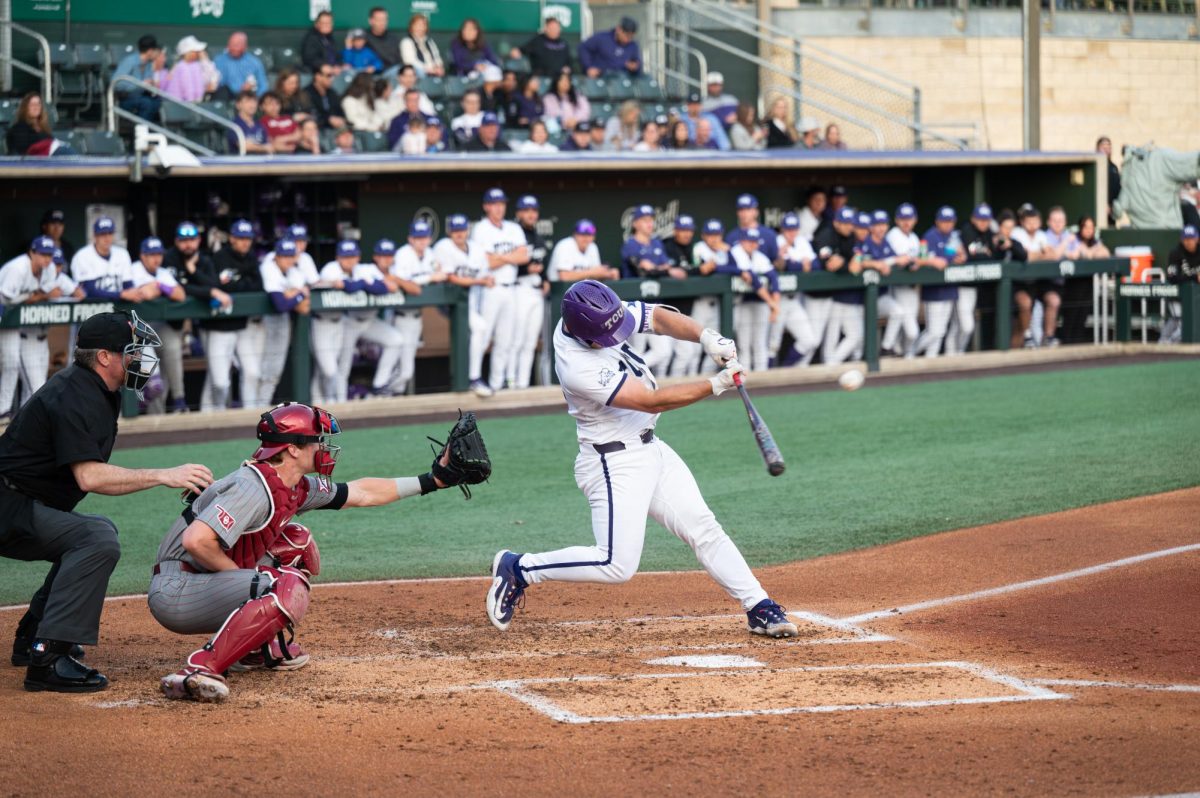During last season’s College World Series, TCU head baseball coach Jim Schlossnagle referred to last year’s nationwide decline in offense as a“travesty” to college baseball.
Schlossnagle’s gripe is a response to the decrease in offense in college baseball over the last three seasons, which stemmed from the switch to the new Batted Ball Coefficient of Restitution (BBCOR) standard bats in 2011.
The switch to the new bats came in response to the 38 percent increase in home runs over a three-year span as well as safety concerns with the old standard for bats, which could turn a 90 mph fastball into a 108 mph line drive back to the pitcher.
The new bats that comply with BBCOR standards act more like wooden bats, similar to the ones used in professional baseball – the “sweet spot” is smaller and, therefore, the ball tends to come off the BBCOR bats slower than it did off the previously used bats.
This season, the NCAA implemented baseballs with lower seams, which are comparable to the ones used in professional leagues.
The new balls carry farther than the ones with the raised seams, in order to increase offensive production without compromising player safety. Research shows that flat-seam balls travel approximately 20 feet farther than the raised seamed balls because the shorter seams are less wind resistant.
One month into the college baseball season, the new baseballs have offensive numbers throughout the country trending upward.
Through the last week of March last year, the national average number of runs per game was 5.14. Through the first month of this year’s season, teams are scoring an average of 5.4 runs per game.
One of the most noted criticisms of the new bats over the last three years has been the near disappearance of the home run.
In 2010, the last year before the BBCOR standard was implemented, the home runs per game average was at a relatively high 0.94. The home runs per game average was a meager 0.36 after the opening month of last season, but that number climbed to 0.49 in 2015.
Schlossnagle said he notices the differences in the way the ball carries, but, for his team, that doesn’t necessarily mean the Horned Frogs will rely on the home run more than they did last year.
“You see the ball take off, which for some teams means more homers, for us it means more base hits and doubles I guess,” Schlossnagle said.
Overall, TCU’s offensive statistics have improved from last season, despite losing last year’s leading hitter Boomer White and home run leader Kevin Cron.
Last year, TCU ended the month of March with a team total of four home runs. So far this season, the Frogs have hit seven. TCU has also upped its batting average to .280 from .270 and has outscored the 2014 team 103-98.
Shortstop Keaton Jones‘ freshman year was the first year the bats had to comply with BBCOR standards. In the second game of his senior year, the first year with the flat-seam balls, Jones hit his first home run of his TCU career.
“It definitely carries, it definitely does,” Jones said. “It goes a longer a way, offensively it’s nice…it’s helping us, it’s helping a lot.”
Jones said the new ball hasn’t really affected his defensive play in the infield, but his coach said the ball has changed the defensive strategy of the outfield, which has led to more balls dropping in for hits.
“You definitely have to respect to the pull side of the field against just about every hitter,” Schlossnagle said. “You can still shallow up a little a bit against some of the guys, but you definitely have to respect the middle of the order, because the middle of the order against most teams can hit it over the your head.”
Though the intent of the new flat-seam ball was to increase teams’ offensive numbers, Schlossnagle said pitchers seem to be the ones who like the new baseballs the most.
“It doesn’t beat your fingers up as much, mainly,” Schlossnagle said. “But also, they can spin it faster, they all think they’ll play professional baseball, and a lot of them will, and it’s very similar to the ball they’re going to be playing with in pro ball.”
TCU’s pitching staff’s 1.77 team ERA is the second best in the nation. At this point of the season last year the Frogs’ pitchers had a 3.00 team ERA, and that team’s ace pitcher was first-round draft pick Brandon Finnegan.
TCU relief pitcher Trey Teakell said he prefers pitching with the new flat-seam ball over the raised-seam ball.
“I like them,” Teakell said. “They’re smaller than they were last year. The ball feels smaller in general, so it makes me feel like I can throw it harder.”
Though Schlossnagle said he thinks the new balls are a good step in the right direction for both college hitters and pitchers, there are still changes that can be made in the future.
“I think we have it about right,” Schlossnagle said.
“I would like to see us play with a minor league baseball to be honest with you. Both with the lower seams and the harder ball, I think that would be the most ideal thing. I think we’ll eventually get to that, but it’s been a definite improvement, no question.”







